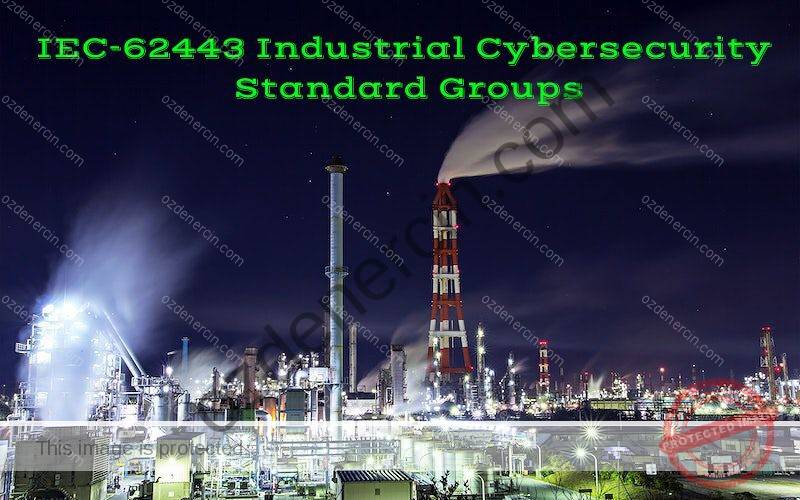Industrial cybersecurity standards play a crucial role in safeguarding critical infrastructure and industrial control systems (ICS) against cyber threats. These standards provide a framework of guidelines and best practices for organizations operating in operational technology (OT) and ICS environments. Among the various industrial cybersecurity standards available, the IEC-62443 series stands out as one of the most comprehensive and exhaustive sets of standards in the industry.
Understanding the IEC 62443 Standards
The IEC-62443 standards have been specifically developed to address the unique cybersecurity challenges faced by industrial automation and control systems (IACS) and OT environments. These technologies are central to critical infrastructure sectors such as utilities, petroleum production, pipelines, and more. By adopting the IEC-62443 standards, organizations can enhance the reliability, integrity, and security of their IACS, mitigating the risk of successful cyberattacks and improving overall system performance.
The Benefits of a Standards-Based Approach
Using a standards-based approach offers several benefits to organizations. First and foremost, it reduces the likelihood of successful cyberattacks by implementing a common set of requirements and best practices. This approach also simplifies system complexity by providing a unified framework that stakeholders can follow. Additionally, it improves security throughout the system lifecycle and fosters collaboration among asset owners, product suppliers, and service providers.
The Scope of the IEC-62443 Standards
The IEC-62443 standards cover a wide range of topics related to IACS security. They provide guidance on cybersecurity reference architectures, security processes, requirements, technology, controls, security acceptance testing, product development, security lifecycles, and cybersecurity management systems (CSMS). These standards also define relevant policies and procedures that organizations can incorporate into their frameworks to ensure best practices and periodic reviews.
Adoption and Applicability
While the adoption of IEC-62443 standards is optional, it is recommended for organizations operating in the industrial and manufacturing sectors. These standards help structure and define IACS security maturity and posture, providing selection criteria for security products, programs, and service providers. They are regularly updated and supplemented with technical reports to address evolving technological situations and solutions.
A Breakdown of the IEC-62443 Standards
The IEC-62443 series comprises nine standards, technical reports, and technical specifications, organized into four main groups: General, Policies and Procedures, System, and Component.
Group 1: General
The General group includes documents that cover concepts and terminology applicable to the entire series. Part 1-1 provides an introduction to the terminology, concepts, and models used throughout the standards. Part 1-2 offers a master glossary of terms and definitions. Part 1-3 describes a methodology for developing quantitative metrics derived from the standards’ process and technical requirements. Finally, Part 1-4 provides a detailed description of the IACS security lifecycle and presents various use cases.
Group 2: Policies and Procedures
The Policies and Procedures group focuses on the methods and processes associated with IACS security. Part 2-1 outlines the requirements for establishing an effective IACS security program. Part 2-2 introduces a methodology for evaluating the level of protection provided by an operational IACS. Part 2-3 offers guidance on patch management in the IACS environment. Part 2-4 specifies the security program requirements for IACS service providers. Part 2-5 provides implementation guidance for IACS asset owners.
Group 3: System
The System group addresses requirements at the system level. Part 3-1 describes the application of security technologies to IACS environments. Part 3-2 focuses on security risk assessment for system design, including the establishment of security levels for different zones and conduits. Part 3-3 defines system security requirements and security levels for suppliers, system integrators, and asset owners.
Group 4: Component
The Component group provides detailed requirements for IACS products. Part 4-1 outlines the secure product development lifecycle requirements, including security requirements definition, secure design, implementation, and patch management. Part 4-2 specifies the technical security requirements for IACS components, such as embedded devices, host devices, network devices, and software applications.
Implementing IEC-62443: Benefits and Considerations
Implementing the IEC-62443 standards offers numerous benefits to industrial and manufacturing companies. By adopting these regulations, organizations can establish a comprehensive cybersecurity framework with adequate controls and measures. The internationally recognized standards enable asset owners and operators to design and implement technical solutions integrated with robust security measures and capabilities. Moreover, the standards facilitate compliance across the supply chain and provide cybersecurity in operational risk management profiles.
To ensure successful implementation, organizations should consider conducting a risk assessment specific to their network environment. This assessment will help determine the appropriate level of adoption and customization of the IEC-62443 standards. The IEC-62443 series of standards serves as a comprehensive guide for industrial cybersecurity, specifically addressing the challenges faced by IACS and OT environments. These standards offer a framework of requirements, best practices, and methodologies to enhance the security and reliability of critical infrastructure. By adopting the IEC-62443 standards, organizations can strengthen their cybersecurity posture, reduce the risk of cyberattacks, and ensure the integrity of their industrial control systems. With ongoing updates and technical reports, the IEC-62443 standards continue to evolve to meet the changing landscape of industrial cybersecurity.

